Alone in Mongolia
by The Hairpin
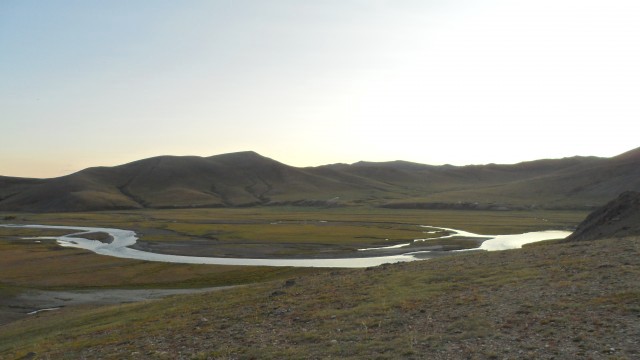
Nick Myers recently went to Mongolia.
Edith Zimmerman: Okay — Nick, how did you end up in Mongolia?
Nick Myers: I ended up in Mongolia after having spent a couple trips bumming around Korea with my then-boyfriend, and the prospect of hanging around in Seoul for three weeks for the third time in a calendar year was a bit depressing. So I did some research about places I could fly for the middle week or so of my trip without too much hassle (meaning direct flights or bust). I had originally narrowed down my options to Hanoi, Vietnam, Chengdu, China, or Almaty, Kazakhstan, crowdsourced on facebook for recommendations, and ultimately threw away all of my original ideas and bought a round trip ticket to Ulaanbaatar. I ended up choosing Mongolia because I have, for about as long as I can remember, been fascinated by it. Its remoteness, its history, its culture, etc. I think the pipe dream began when I was 8 or 9 and I saw a picture of Erdene Zuu Khiid Monastery.
What’s your “regular” life like?
My regular life at the time was kind of in upheaval. I was finishing up a summer tenure at a major telecommunications firm before my final quarter of business school. These days I’m a smaller scale corporate lackey at a CPG consulting firm in Seattle. Most of the work I do involves manipulating snack food databases. I know more about pretzel thins than I care to.
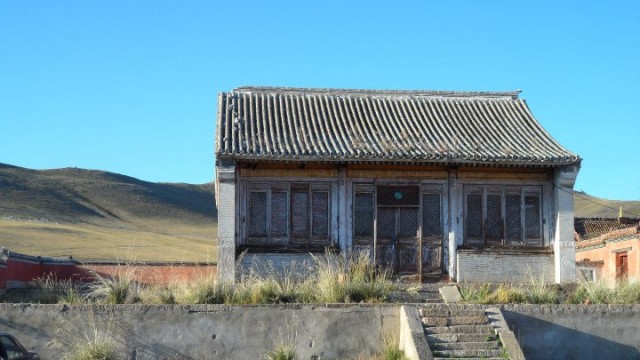
How did you get to Mongolia, and what did it cost?
I got there via Seoul. The flight was direct to Seoul from Seattle, and set me back $1100, and I bought my ticket to Mongolia with frequent flier miles. I think the flight would have cost me about $600 had I not used frequent flier miles. If I had had more time, I would have rather taken the first leg of the Trans-Siberian railroad from Beijing to Ulaanbaatar, but I guess I’ll save that for next time.
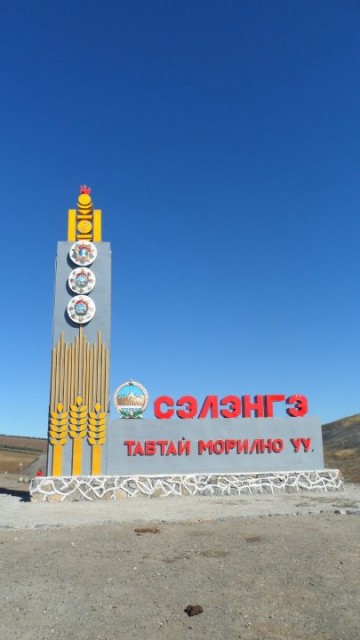
What was the first and last thing you ate? The best and worst?
The first thing I ate was this candy from a mini mart next to my hostel. It was amazing, milk chocolate on the outside, coconut creamy something on the inside. Kind of like a Mounds bar, but not quite as … industrial? I found out later that the candy was actually Polish. Mongolia, as a formerly communist country, still has lots of strong ties with Eastern Bloc nations. The last thing I ate was a mutton dumpling from the Ulaanbaatar airport right before leaving. It was a poor choice. Food wasn’t the main draw for me to go to Mongolia — there’s a lot of meat (which I don’t eat generally, but make a rule of eating anything presented to me when traveling), potatoes and root vegetables, and DAIRY. Lots of yogurt, cheese curds, etc., typically made from mare, goat, or sheep’s milk. My favorite meal was, hands down, prepared by this family I met near Kharkhorin (about 4 hours south of Ulaanbaatar via jeep), the ancient capital of the Mongol empire, now a town of about 15,000. Nomadic families in Mongolia have a rich tradition of hospitality, and they welcomed me into their yurt for fermented mare’s milk (yes, it’s gross — I can only describe it as … viscous) and a carrot, mutton, and potato dish. It wasn’t the taste of the food that made it the best, but rather the fact that this family would welcome a foreign stranger into their house, with no Mongolian language, for a meal. It was a spacey experience for sure, and completely discordant from any experience I’ve had in the states.
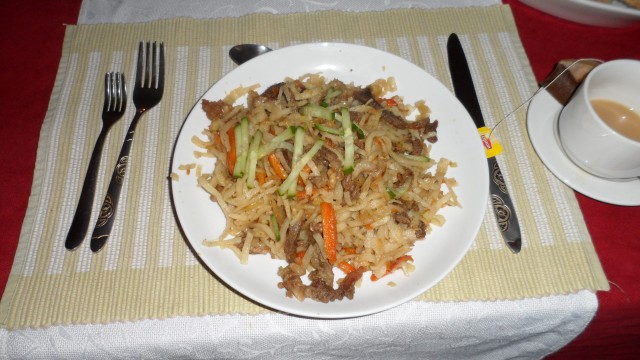
The worst thing I ate was a really nasty meat and pasta dish at a rest stop restaurant named “Texas.” I also ate a lot of Clif bars because I’m a hypochondriac when it comes to stomach issues. Especially so when I know there aren’t going to be many toilets around.
What was the weather like?
The weather was amazing. Mongolia has about 250 days of sunny weather per year, and it was gorgeous during my entire stay. I should preface that by saying the weather was amazing and clear when I was outside of the city. Ulaanbaatar itself is notorious for having terrible air quality and pollution from the combination of its reliance on coal power, city dwellers heating their homes with coal bricks, and particulate matter migrating north from China via the Gobi Desert. Outside of the capital, however, the air was the cleanest I’d ever experienced. It would be sunny and in the 60s or so during the daytime, and the temperature would dip down to about 30 at night — I was not prepared for this drastic a difference. This was September, which is the tail end of the two-month (July/August) high tourist season. Night in the steppe was really a trip, as you could see every star in the sky, hear wolves howling, etc.
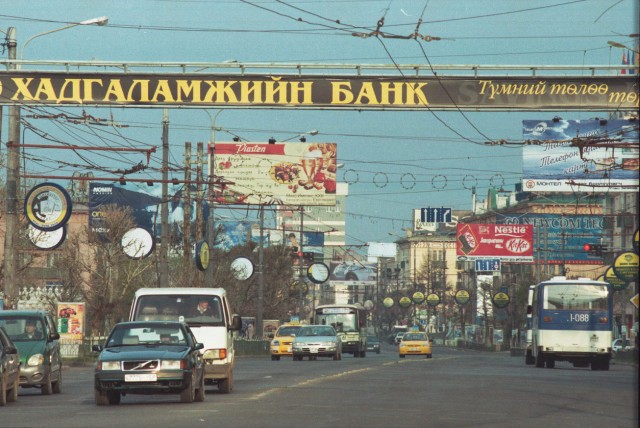
Where did you stay / where did you sleep?
My home base for the trip in Ulaanbaatar was in a hostel in an old, Soviet-style apartment block. It occupied the entire fourth floor of the building, and had an interesting variety of clientele — from PCVs arriving to start their tours of duty, to church groups there to build houses, to rowdy, drunken Japanese tourists there (I presume) for sex tourism. The woman who ran the hostel, Zaya, was a harsh woman, I also presume from living through the rise and fall of communism there, and the subsequent economic nightmare that pushed nearly the entire population into poverty. It was, actually, probably the nicest hostel I’ve ever stayed in.
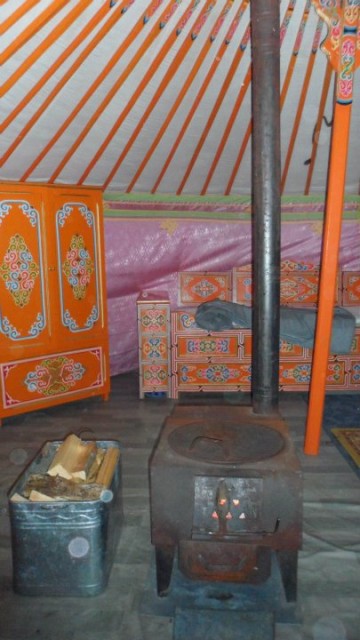
Yurt interior
Outside the city, I stayed in yurt camps. Because it was the end of the tourist season, most of the yurts had been disassembled for the winter, as the camp operators typically move to the city for the winter because of better access to cheap heat. Essentially, these camps spring up in pastureland all over the country in the summertime to accommodate the influx of tourists. As I was traveling solo, I would typically have a yurt with 4 beds to myself, which worked out in my favor, as they’re heated by woodstove, and once the wood stops burning in the middle of the night, it gets cold, FAST. So, because there were three empty beds, I would take the blankets off all of the unoccupied ones, and make myself a nest to stave off hypothermia. The cold hours were typically between 11 p.m. and 5 a.m., at which point the host of the camp would come in and start another fire in the woodstove. One of my hosts, after starting a fire in my stove, hopped into my bed and gave me an awkward rubdown, I presume to help warm me up. I didn’t ask questions, and pretended to remain asleep for that encounter.
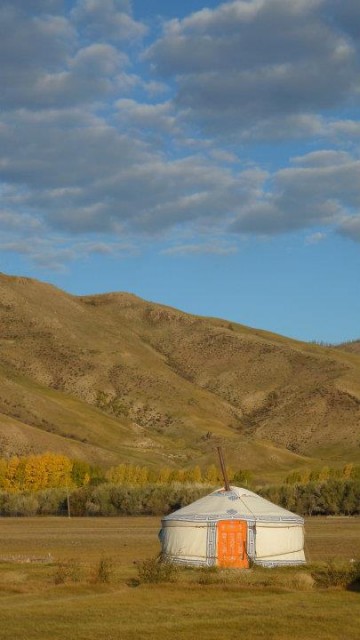
Yurt exterior
Can you briefly describe a few of the best people you met there?
Zaya, the owner of the hostel in Ulaanbaatar, was a savior. She was full of tips, like, “Don’t keep anything in your pockets. Pockets are ‘Mongolian Donation Boxes’” for pickpockets in the city. At first we were at odds a little bit because I wouldn’t listen to her advice regarding riding public transportation or avoiding the outdoor market, but I think she ended up respecting me because I stood my ground on wanting as “authentic” — forgive the hackneyed travel trope — experience. She also introduced me to her daughter, who ended up going with me on my last jaunt outside the city to a remote monastery in the north of the country. Also, because the focus of my trip was to visit the three holy Buddhist sites of the country, I ended up meeting a lot of child monks. I went to this one monastery so remote that I had to traverse about 50km of steppe with no roads in a jeep to get there. Once there, I was the only person there, and the monastery was locked, so I had to tromp around the grounds to find a monk to let me in. I found this group of child monks playing soccer, and one of them gave me a tour. He changed from his Houston Rockets jersey into his robe and walked me through the grounds, unlocking temple buildings housing these amazing pieces of Buddhist parephernelia and art. And then we kicked around a soccer ball for a bit and shared a Clif bar.
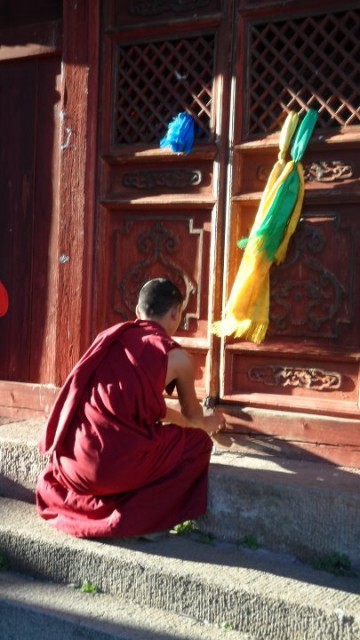
Did you hear a lot of music?
I wish I could tell you I heard lots of amazing traditional music (like throat singing!), but mostly I heard a lot of Boney M. I had a driver for my last jaunt, and I swear the only two songs on the only cassette in his car were Boney M’s “Rasputin” and “Daddy Cool.” Oh, I heard lots of Buddhist chanting, also, if that counts. But for the most part, this was the soundtrack to my trip.
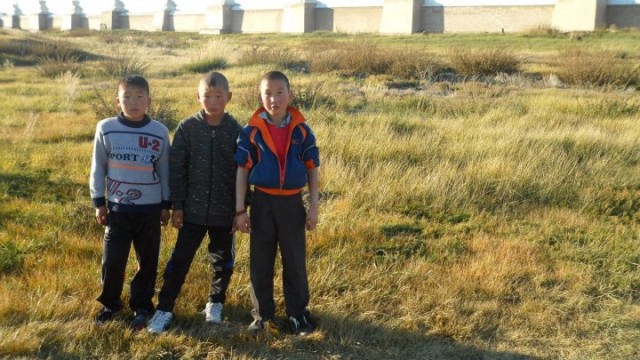
[Boney M.!] Sustain any injuries?
I didn’t sustain any injuries, but as I mentioned before, I’m a bit of a hypochondriac when it comes to stomach issues, and have a chronic fear of being away from modern plumbing. So I came up with a crafty solution, which involved me taking a prophylactic double dose of Immodium every time I left Ulaanbaatar. I experienced a lot of stomach discomfort, but I never had to shit under a bridge, which is the preferred method to relieve oneself when your minibus pulls over for a five-minute break.
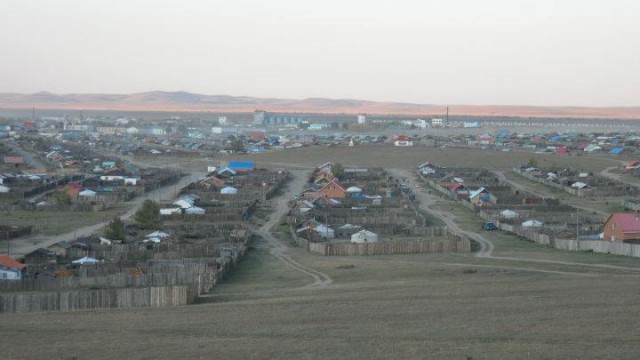
Bring anything home?
I have two prized possessions from my trip to Mongolia. The first is a huge wall map indicating in Cyrillic all the different mines in the nation. I plan on framing it someday. I bought it from a man on a street who sold all kinds of household goods. He seemed tickled to hear me try to speak in his language, and gave me a hearty handshake once we completed the transaction. The other is a custom deel I had made at the outdoor market in Ulaanbaatar. Deels are the national “costume” of Mongolia, there are summer deels, winter deels, formal deels, everyday deels, prom deels, etc. I bought a winter deel, meaning more layers of felt and wool than a summer deel. These days I put it on to entertain when I’ve had too many drinks and feel the need to convince people that I’m worldly. I did not buy any cashmere (Mongolia produces the lion’s share of the world’s cashmere — wait for that fact to pop up on Final Jeopardy!).
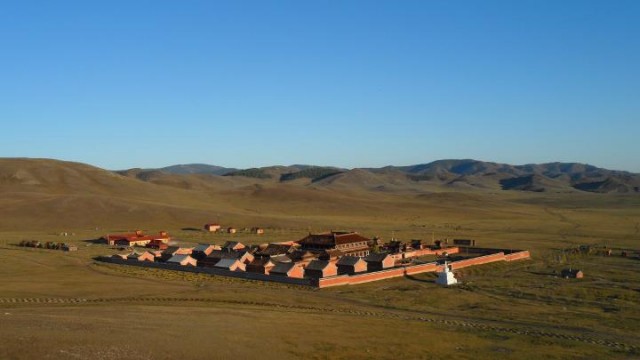
Would you want to go back?
I hope to go back at some point. I’m big into running lately, and fantasize about running a 50k on Lake Khovsgol (Lake Baikal’s baby lake sibling — also home to an endangered tribe of reindeer herders called the Tsaatan, who have some interesting shamanic traditions). Also, the Naadam Festival would warrant a trip back to see the national championships of the three Mongolian “manly sports”: wrestling, archery, and horse racing.
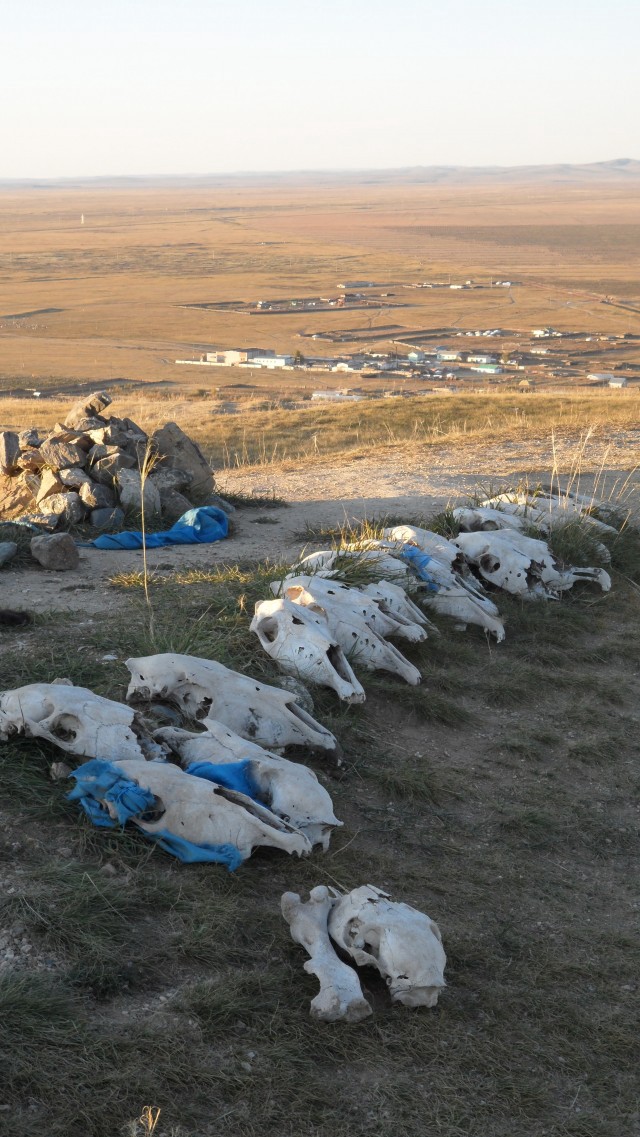
Previously: Poland and Lithuania
Nick Myers spends his days researching natural and organic food trends and crafting really pretty PowerPoint decks.